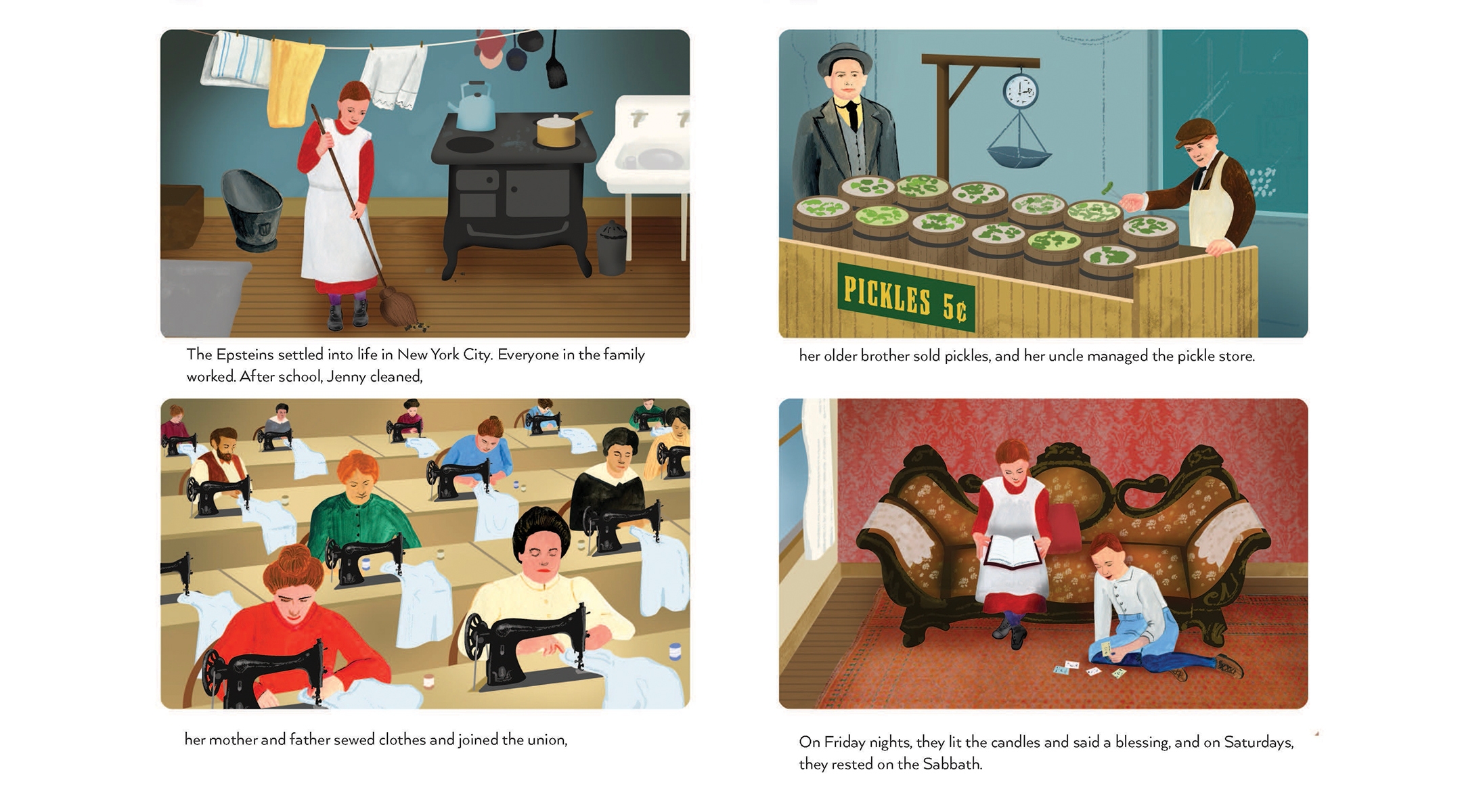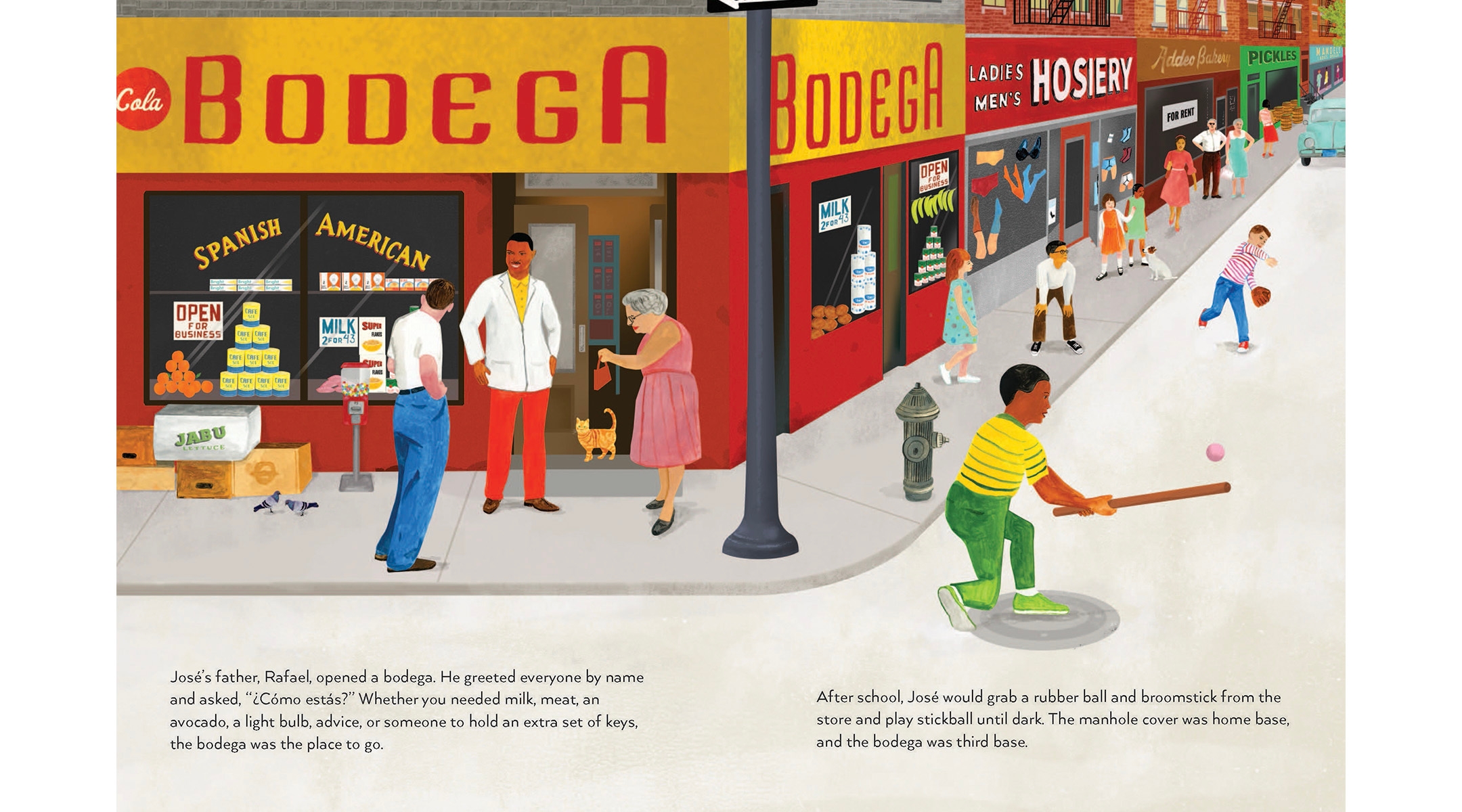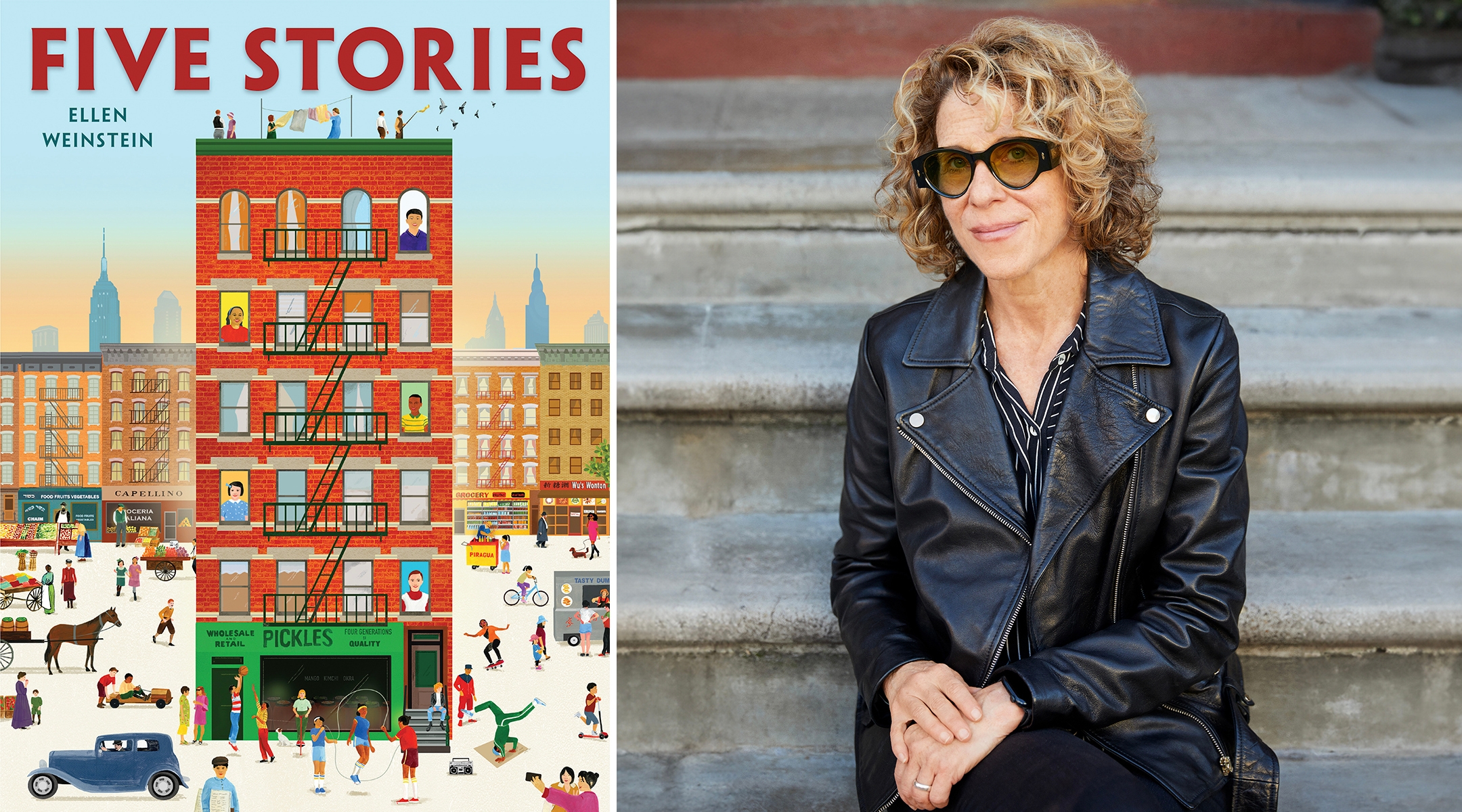(New York Jewish Week) — About a decade ago, author and illustrator Ellen Weinstein, a Lower East Side native, was flying back to New York City after teaching some workshops in Russia.
On the plane, she began to think about a similar journey her Jewish grandparents had made from Russia to New York about 100 years prior. That journey was by ship, of course, and under very different conditions — but both transatlantic crossings, it turns out, were transformational experiences.
“I began to wonder about what life was like for my grandmother, to come all this way to someplace new,” Weinstein recalled. “That’s so much the story of other people in my neighborhood … I started wondering what some of their stories were, too.”
A decade later, those in-flight musings have blossomed into a brand-new picture book written and illustrated by Weinstein. “Five Stories” chronicles the lives of five children, from five immigrant families, from five countries over the course of five different decades — all of whom grew up in the same Lower East Side tenement building.
“Buildings are like people: each one has a story,” the book begins. “This building is over a hundred years old and holds thousands of stories about the people who have lived here on New York’s Lower East Side.
“Lots of families have come to the Lower East Side from different parts of the world and made it their home,” it continues. “And though their reasons for being here are different, they still share many of the same questions, fears, hopes, and dreams. And each generation contributes tastes, stories, and sounds to the neighborhood.”
“Five Stories” opens in 1914 with the arrival of Jenny Epstein and her Yiddish-speaking family — the character is named for and inspired by Weinstein’s grandmother — who learned English together and found work in the garment industry and at a pickle shop. The book concludes in the present day with the Ye family, who came to New York from Fuzhou, China. Along the way we also meet children whose families hail from Italy, the Dominican Republic and Puerto Rico and who represent patterns of migration to the neighborhood through the 1980s.

“Five Stories” opens in 1914 with the arrival of Jenny Epstein and her Yiddish-speaking family. (Text © 2024 by Ellen Weinstein. Illustrations © 2024 by Ellen Weinstein. Used with permission from Holiday House Publishing, Inc.)
“I had the idea early on of a tenement building [and] I knew I wanted to start with my grandmother’s story,” Weinstein said of “Five Stories.” “And then it was just, like what am I showing in between? What am I showing about these families?”
Weinstein spent years researching the stories of her diverse neighbors. She drew upon archival photographs, oral history archives from the likes of the Tenement Museum and the Seward Park Library, as well as one-on-one interviews
A particular highlight during her research, Weinstein said, was when she visited a class at the High School for Dual Language and Asian Studies on Grand Street. There, she distributed a questionnaire to the students — most of whom were from Fuzhou, from which immigrants have been coming in large numbers since the 1980s — asking what they missed from home, what their parents do for a living and what they like about living in New York. “Just being able to meet with people who I didn’t know and hear their stories; it was a wonderful experience,” she said.
“There were so many commonalities,” Weinstein recalled about hearing her neighbors’ migration stories. “So many of the challenges that people who have come recently from Fuzhou face are not that different from what my grandmother faced. You’re a stranger in a strange land, right? You have to learn a new language, you have to get used to a new place.”
Just as important as the characters in “Five Stories,” however, is the tenement where they all reside, as well as the semi-fictitious Lower East Side block on which the building stands. Eagle-eyed readers will spot several iconic Jewish local spots in Weinstein’s colorful and highly detailed illustrations, including Moscot Eyewear, Russ & Daughters and Katz’s Delicatessen. “They’re really anchors in the community,” she said. “There was a lot of compressing of time and space. But I wanted to just have this one street scene, and I wanted to have those stores, because they’re so important.
“When I was actually designing the building — and I will say, designing the building — I got to play architect,” she said. “You follow one, and I’m like, ‘Nah, I don’t like those fire escapes, I like these windows better, I want to put a stoop here.’ It [the building] was representative and fairly typical of these buildings, but they all had their unique qualities.”
Working on the book, said Weinstein, has given her a new lens to view her longtime home. “It’s so easy to take what you see every day for granted; I would kind of just walk by,” said Weinstein. “And now I do look at it differently, having studied it so closely, and having talked to so many different people.”
Weinstein grew up in the East River Housing Co-op and, after a few years living in other New York neighborhoods, moved back to the LES in the late 1990s with her husband.
“There’s been a lot of changes but there’s also been things that have stayed the same,” she said about the neighborhood, making a distinction between the trendy blocks close to Orchard and Houston Streets and the quieter, farther-flung eastern reaches of the neighborhood, where she lives. “There’s a lot of long-term residents … There’s a real community here. That, I think, has been stable. The mix of people has remained — it hasn’t become this whole gentrified thing, and i hope it doesn’t.”

A family from Puerto Rico are among the residents of a Lower East Side tenement depicted in “Five Stories.” (Text © 2024 by Ellen Weinstein. Illustrations © 2024 by Ellen Weinstein. Used with permission from Holiday House Publishing, Inc.)
Nonetheless, some things have changed: Weinstein acknowledged that while her building has a “decent population” of Jews — who range from secular, like herself, to Orthodox — these days, “I hear far less Yiddish spoken in the streets.”
A notable exception is a visit to Moishe’s Bake Shop, a kosher bakery on Grand Street that’s been in business since the 1980s. “It’s like going back in time,” said Weinstein, who recommends their black and white cookies in particular. “They have the old-fashioned bread slicer.”
In real life, across the street from Moishe’s is a trendy cafe with exposed brick walls — and this Lower East Side mix of old and new is expertly depicted throughout the book; as the decades progress on the block in “Five Stories,” many businesses change while some remain the same. “I think that’s one of the great things and beautiful things about the Lower East Side: It’s not a stage set,” she said. “You still have some of these Jewish-owned stores, they’re mixed in between these historic synagogues — and then there a bodega and a community garden and a Chinese restaurant.
“That’s what makes it really interesting — the layering of people who are here,” she said. “It’s a very diverse neighborhood.”
The New York Jewish Week brings you the stories behind the headlines, keeping you connected to Jewish life in New York. Help sustain the reporting you trust by donating today.





